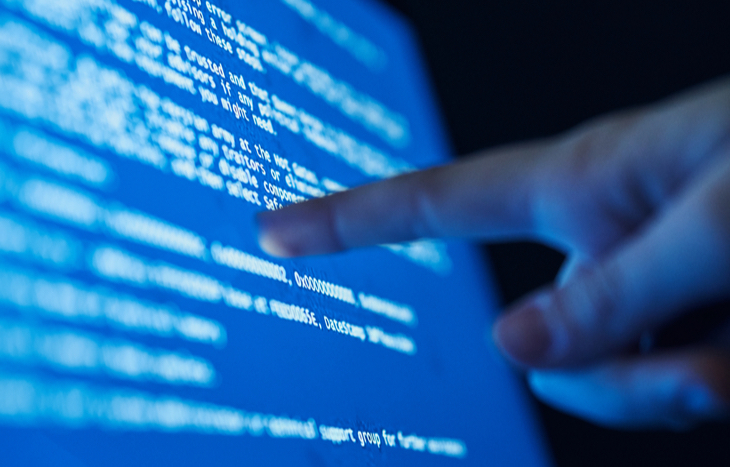What is Algorithmic Trading?

Every minute the stock market is open, tens of thousands of transactions occur. Some of them happen when investors hit the buy or sell button. However, a majority of them happen automatically, through a process called algorithmic trading. What is algorithmic trading? It’s computerized, automated trading that happens without any human intervention. Computers trade based on predetermined rules, and execute buy/sell orders within specific parameters.
Algorithmic trading happens instantly, which gives traders using computerized trading software the edge. But, while there’s tremendous upside to algo-trading (as it’s called), there are also a couple of hidden drawbacks. Let’s explore them both, to break down how a majority of the market’s trade happens in almost instantaneous fashion.

Computerized, Rule-Based Trading
Algorithmic trading is a precursor for high-frequency trading (HFT), the standard used by most institutional investors today. The entire system works via logic programming—a series of criteria and variables, orchestrated to act and react to market fluctuations. Algorithmic trading tends to be simpler than HFT, and it’s where most traders get their introduction to computerized, rule-based trading.
One of the simplest examples of algorithmic trading involves an “if this, then that” approach to observing moving averages. For example, “if the 50-day moving average goes above the 200-day moving average, then buy 50 shares of ABC.” Programmed into a trading algorithm, the trade will execute automatically when the criterion is met.
Algorithmic trading serves two important roles. First, it absolves investors of having to monitor countless stocks and price patterns. Second, it takes emotion out of the trading process. If everything is rule-based and automated, investors don’t need to worry about second-guessing—or missing opportunities.
The Role of Technical Indicators in Algo-Trading
Algo-trading tends to be popular among technical investors. This is because most algorithmic rules stem from technical evaluations. Investors looking at charts will identify patterns, then program an algorithm or algorithmic criteria to capitalize on them.
Say, for example, there’s a channel present on the stock chart for ABC Company. A technical investor can use algo-trading to establish breakout points for continuation and reversal, complete with criteria. If and when the price breaches the breakout point, it’ll automatically trigger the action. This holds true for any type of pattern or trend observation. Algorithms reflect procedural steps specific to a stock’s action. As investors seek to predict that action, they’ll establish different trading rules.
Pattern trading isn’t the only strategy technical investors can apply algo-trading to. Experienced traders also use it for arbitrage opportunities. Algorithms can identify price differences across exchanges and automate buying and selling to capitalize on arbitrage opportunities. Other examples of algo-trading on technical indicators include:
- Volume-weighted price averaging
- Time-weighted price averaging
- Percentage of volume
- Mathematical model-based strategies
The Many Benefits of Automated Trading
The list of benefits associated with algo-trading is extensive. Investors who have access to the software to automate trades and the skill to program algorithms have plenty of opportunity ahead of them. Some of the biggest benefits to well-orchestrated algorithms include:
- Buying and selling at the best possible prices
- Instantaneous trades after criteria are met
- Fewer transaction costs
- Less chance of price slippage
- Reduced risk of human error or mistake
- Emotion-free investing thanks to automation
- Continuous automated market monitoring
In trusting an algorithm to do all the work, human traders are completely absolved from the process. Taking emotion or human error out of the equation allows for pure numbers-based investing, based on stringent criteria. And, because computers act faster than humans, there’s the added benefit of rapid execution.
Are There Drawbacks to Algorithmic Trading?
While there are overwhelming positives that make algorithmic trading a boon to any experienced investor, there are some drawbacks worth considering. Thankfully, most of them are avoidable with a little foresight to the programming process:
- Problems with the algorithm’s sequence that prevent trade execution
- No failsafe criteria built in to prevent trades in rapid succession
- Algorithms have no flexibility to deviate from their sequence
- It’s easy to forget about automated trading rules
While automated trading is great for rapid trading, it’s very easy to lose track of if you have multiple positions going at the same time. A simple algorithmic mistake could end up costing investors significantly. Moreover, not updating an algorithm to reflect pattern or trend changes means skewing the investment.
Investors need to get comfortable using algo-trading software and always stay on top of the rules governing it. This is especially true for anyone with hopes of moving into HFT strategies in the future.
The Bottom Line on Algorithmic Trading
What is algorithmic trading? It’s the fastest way to trade, by letting the computer do it for you. And while anyone can access algorithmic trading opportunities, that doesn’t necessarily mean they’re for everyone. To capitalize, traders need to implement strong logic rules to ensure the trading program executes as-intended. Programming the wrong rules or relying on the wrong metrics could mean missing out on big opportunities—or cost more money than it makes.
At Trade of the Day, their team of experts does the research for you. Sign up for the FREE Trade of the Day e-letter below for access to daily stock picks and insights.
Algorithmic trading is an important tool for experienced traders. It’s often the cornerstone of fast-paced trading strategies. When it comes to entering and exiting positions quickly to mitigate risk, algorithmic trading is imperative.






